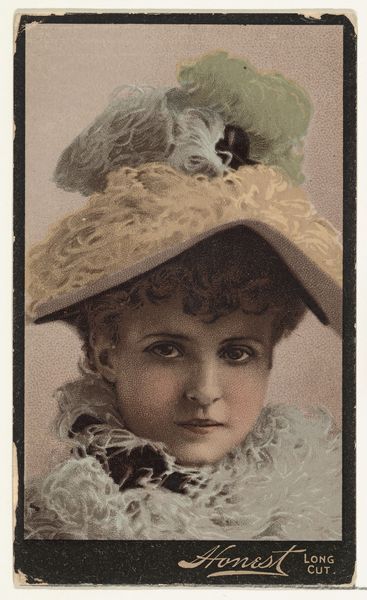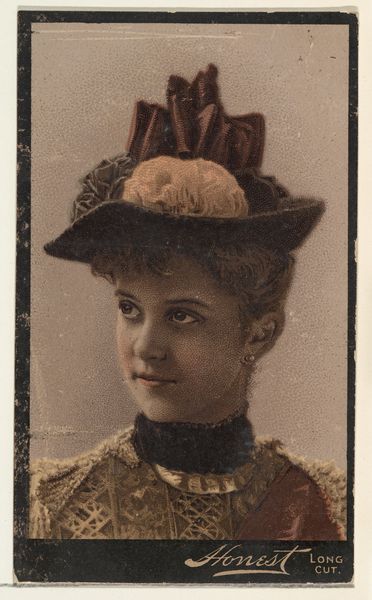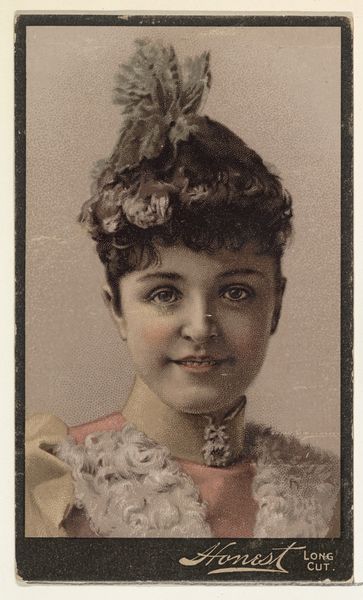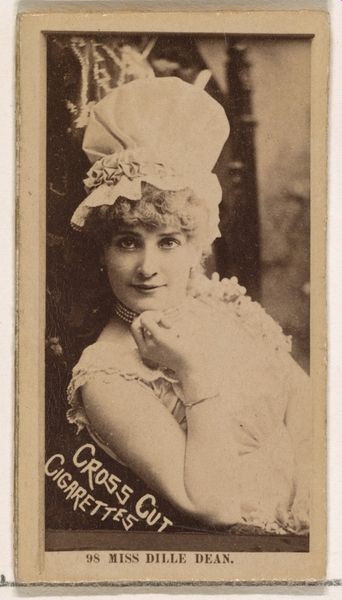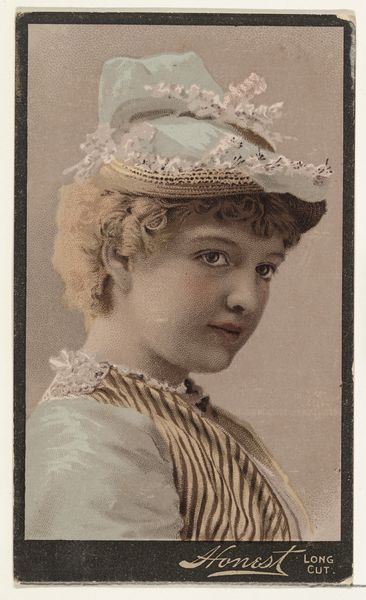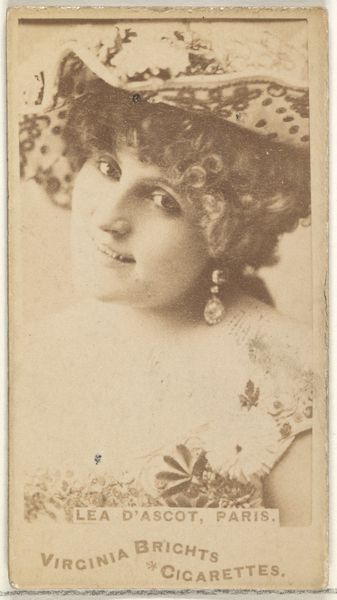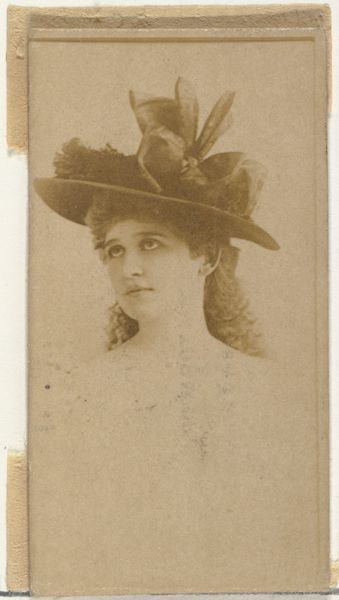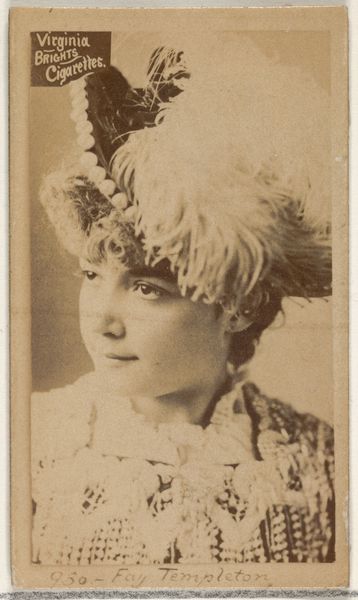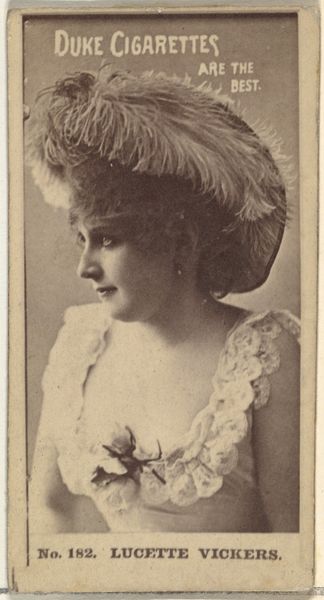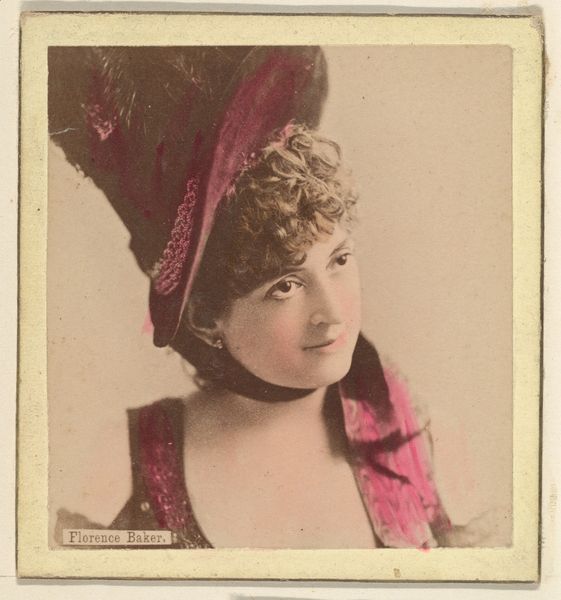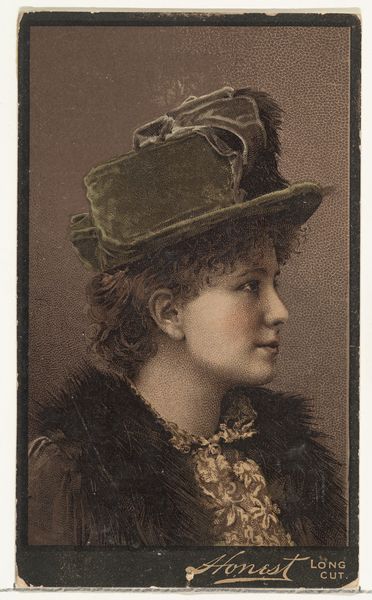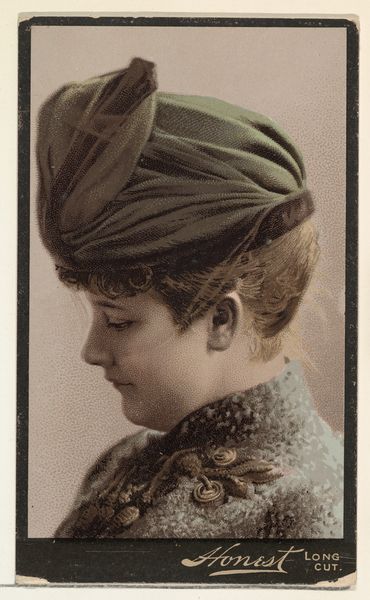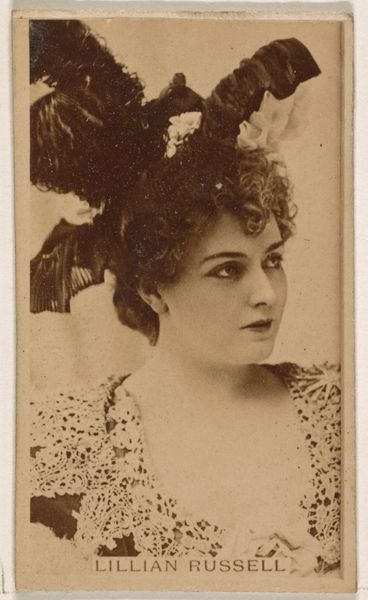
Actress wearing feathered hat, from Stars of the Stage, Third Series (N131) issued by Duke Sons & Co. to promote Honest Long Cut Tobacco 1891 - 1892
0:00
0:00
drawing, graphic-art, print, photography
#
portrait
#
drawing
#
graphic-art
#
art-nouveau
# print
#
photography
Dimensions: Sheet: 4 3/16 × 2 1/2 in. (10.6 × 6.4 cm)
Copyright: Public Domain
Editor: This is "Actress wearing feathered hat," a promotional print from 1891-1892 by W. Duke, Sons & Co. There’s a nostalgic quality to this piece – almost wistful. What can you tell me about it? Curator: This "trade card" is more than just a pretty picture. Consider the context: late 19th-century America. Tobacco companies were vying for market share. These cards, included in cigarette packs, acted as miniature billboards, normalizing tobacco use while subtly promoting an ideal of femininity and consumerism. Who do you think these cards were targeting? Editor: Men, most likely. Curator: Exactly! These cards often featured actresses, singers, and dancers – women already in the public eye, but also strategically positioned as objects of desire. The feathered hat, the fur – these are symbols of aspirational wealth and status. And the "Honest Long Cut" tagline? That’s a direct appeal to male consumers seeking a reliable product, linking it to the beauty and perceived "honesty" of the woman portrayed. How do you think this "image" might have impacted women of the time? Editor: I imagine there must have been enormous pressure to achieve this idealized look, a standard largely dictated by the male gaze and commercial interests. Curator: Precisely. And beyond the individual level, these images reinforced societal norms, defining acceptable roles for women as performers, consumers, and objects of admiration rather than active agents in business or politics. Think about the power dynamics at play. The actress is both celebrated and commodified, her image used to sell a product, subtly reinforcing existing power structures. Editor: That’s fascinating. I hadn't considered the multiple layers of meaning embedded in such a seemingly simple image. It's more complex than I initially thought. Curator: Exactly! By unpacking these layers, we can better understand how images have historically shaped our perceptions of identity, gender, and power, issues that are still profoundly relevant today.
Comments
No comments
Be the first to comment and join the conversation on the ultimate creative platform.
